The History of Jamaican Music 1959-1973
Archived with permission from The GlobalVillageIdiot.net 10/31/00
It was Bob Marley who made reggae into an international phenomenon. In
the wake of his success in the 1970s came a host of other names, and it wasn't
long before reggae became an established genre of music. But reggae was simply
the growth, the development, of what had been happening in Jamaican
music.Beginning with ska, and then rock steady, the loudest island in the world
had declared its real musical independence, and had already made an imprint on
the world, albeit a small one.
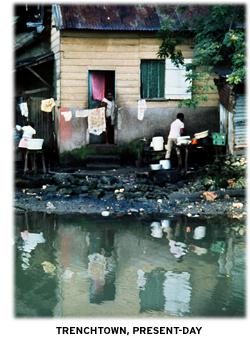
If you want to take it back to the beginning, you have to blame it on jazz.
One of America's great contributions to musical culture, it swept around the
world. Through radio broadcasts and records, Jamaica, then still and British
colony, got the fever in the 1940s. Bands sprang up to entertain tourists, like
Eric Dean's Orchestra and future giants like trombonist Don
Drummond and sax man Tommy McCook learned the licks and honed their
chops on the music.
With the advent of the 1950s, American popular music began to fragment. In
jazz, be-bop became the new movement. Rhythm and blues, the black style formerly
called race music, started coming on strong. The era of the jazz orchestra was
slowly fading as music grew harder, stronger, more youthful. That spread to
Jamaica, just as it did to other parts of the globe.
And Jamaica itself was beginning to change. It had been a mostly rural
economy, but now people were flooding into the capital, Kingston, in search of
their own piece of postwar prosperity. On the weekends Kingstonians old and new
would gather for dances in the open spaces called ‘lawns' all over the city,
where sound systems (essentially loud, primitive mobile discos) would throb with
the latest sounds from the States. If you didn't have a radio - and in the poor
economy, many didn't - this was how you heard the new records.
R&B was the diet of the sound systems. Fast, raw, and with a thick beat,
it played well to both young and old. Sound system owners would travel to the
U.S. to buy new records, or have agents ship them over. It was a constant war to
have the newest, freshest sounds. A popular disc might be played 15 or 20 times
during the course of a dance.
By the mid-50s two sound systems stood head and shoulders above the crowd in
Kingston - Duke Reid with the Trojan, and Clement Dodd with Sir
Coxsone Downbeat. Competition between them was fierce, and would last well into
the next decade, one of the major catalysts for the growth of the Jamaican music
industry. The sound systems had no choice but to play American records, because
the island simply had no recording facilities. Stanley Motta had made
some tapes of the native mento folkloric music, but it wasn't until 1954 that
the first label, Federal, opened for business, and even then its emphasis was
purely on licensed U.S. material.
The kick start to homegrown Jamaican music came with rock'n'roll. As it
became the dominant form in America during the latter half of the ‘50s, the
number of R&B releases dwindled to a trickle - not enough to satisfy the
insatiable appetites of the sound systems. Something had to be done.
The first person to act was Edward Seaga, who would go on to become
Prime Minister of Jamaica. In 1958 he found WIRL - West Indian Records Limited -
and began releasing records by local artists. They were blatant copies of
American music, but that barely mattered; they were new and playable on the
sound systems. The same year, Chris Blackwell (a well-to-do white
Jamaican, related to the Blackwells of Cross & Blackwell fame) got his own
start as a record magnate, putting out a disc by the then-unknown singer
Laurel Aitken, and within twelve months both Reid and Dodd, seeing the
possibility of having records available exclusively on their systems, had jumped
on the bandwagon with the Treasure Isle and Studio One labels, respectively. And
once a pressing plant, Caribbean Records, had been established on the island
(meaning the masters no longer had to be shipped to America for pressing), the
Jamaican recording industry was well and truly born.
From that beginning, it was inevitable that Jamaican music would find
its own identity sooner or later. The biggest surprise is that it happened
so quickly.
The sound called ska came into being in 1960. At least, that's one of
the stories. Other sources claim 1959. Or ‘56. Or ‘61. In other words,
almost as many people claim to have invented it as there were producers on
the scene. There's no doubt, however, that Jamaicans were ready for
something new. The homegrown copies of R&B just didn't have the punch
of the originals.
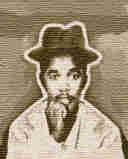
"We were trying to imitate," noted singer Derrick Morgan, "but
when we did it, it wasn't real." While so many grab the credit for ska,
critics generally agree its father is Prince Buster. Cecil Campbell
(his real name) had been an employee of clement Dodd, leaving in 1960 to
set up his own Supertown sound system. Like others before, he turned to
record production, beginning with a mammoth session of 13 songs for his
new label, Wild Bells.
"On the way home from a session with Duke Reid I met Prince Buster,"
recalled Morgan. "He asked me to come and sing - he was just starting out.
I told him yes. We did 13 songs, and they were all hits. He was supposed
to give Duke Reid half the money, but in the end he just have him one
song, the one he thought was the weakest, by [trombonist] Rico
Rodriguez."
It was one of those events that changed history. Over the course of the
session, something new came into being, which melded the rhythm of
traditional mento music, mixing it with R&B.
" With those tines - "They Got To Go" and "Shake A Leg - they're coming
more into ska," explained reggae historian Steve Barrow, "with the
emphasis on the afterbeat carried by the guitar, because that's what
[guitarist] Jah Jerry did for Buster. Buster said, ‘I told him,
change gear, man, change gear,' and Jerry would give it that afterbeat
syncopation on the guitar."
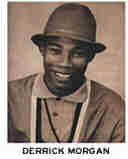
Now they had something new; all it needed was a name, and that came
from bassist Cluett Johnson, Barrow noted, "because he used to go
around calling everyone skavoovie, and that was a made-up word, but it was
a precedent for a name."
Buster couldn't have guessed he'd be charting the entire future course
of Jamaican music. All he cared about was that the crowds at his sound
system loved his new beat.
But the homegrown music, now readily identifiable, fitted in perfectly
with the mood of the time. With Jamaica receiving its independence,
national pride was running high, and anything uniquely Jamaican was
embraced. Also, the new ska, made by the working classes, was definitely
music of the people, really music of the Kingston ghettoes. The other
sound system operators needed to make their own ska records to compete
with Buster, which they very quickly did.
Discs were made primarily for sound systems, rather than for sale. So
the product was on acetate (also known as pre-releases) which would
quickly deteriorate - by which time they'dalready been replaced with
something new. Still, those with money could buy the records.
"Prince Buster used to sell copies of "Humpty Dumpty" for 50 pounds!"
said Morgan. "You could buy a house for that in those days. And if they
did ever release the songs, they'd put them on white labels, with no
artist credit. But the sound systems did motivate us to record. People
used to come looking for the best, the most excitement, and they wanted
the newest sounds."
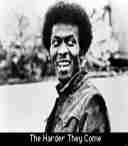
Both Reid and Dodd began having their own ska hits, and soon there was
another face on the scene, Leslie Kong, a Chinese-Jamaican who
owned a restaurant called Beverley's, which proved inspirational to young
singer Jimmy Cliff.
"Jimmy wrote a song called "Dearest Beverley," remembered Morgan, "and
he went to see Kong to get it recorded. They told him to look for me and
said that if he found me, he could record his song. So he came to my
house. His song was a slow ballad, and I told him no-one would like it,
because we were all doing ska music. So we wrote "Hurricane Hattie" and
"King Of Kings" and we went to meet Leslie Kong."
Although inexperienced, Kong was eager to enter the record business,
and asked if Morgan, by then already well-known, would record a side for
him, "so I recorded "Be Still." And he took on Jimmy Cliff, who was still
Jimmy Chambers then - Beverley's changed his name. And I started recording
for Beverley's."
For Morgan, it was a matter of economic reality. Most producers were
offering musicians $10 a song, Beverley's upped the stakes to $20. And
since no-one was paying royalties, people went where the money was and
laid down tunes as fast as they could. Morgan's defection started a
rivalry between him and Prince Buster.
"In 1962, after I'd left Buster, I made "Forward March!" which was the start
of it. Buster said there was an instrumental break on the record that had been
stolen from him." His response was to release "Black Head Chinaman," aimed
directly at Morgan and Kong. The problem lasted for two years until "the
government finally asked us to stop, because it was causing too much trouble."
While the feud continued, it fueled record sales for both artists. Not that
Morgan needed the boost. Even as new acts like the Wailers and the
Maytals, or solo artists such as Alton Ellis and Eric
Morris came along, he remained the king.
"There were a lot of hits," he said. "There was a time when I had seven of
the top 10, number one to number seven. They used to call me ‘The Hitmaker and
the Hitbreaker.' Every producer used to come looking for me. And every Saturday
whoever had hits in the charts used to go to a club called the Silver Slipper
and sing. They'd pay two pounds a song. I ended up getting 14 pounds one week,
and the other artists didn't like that. But it was me. I'd sing, and people
loved it, and my records sold."
According to Barrow, Morgan was so successful "because he sang soulfully, he
had that sound, but he sang Jamaican songs, things that could only have been
written in Jamaica."
The ska sound swept through Jamaica the way beat music would take over
England a few years later, and the number of recording acts proliferated to meet
the demand. It offered a start to a numbers of artists whose careers still
continue. The Maytals, led by Toots Hibbert, scored a string of hit
singles. Ken Boothe.
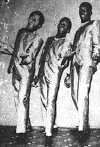
It was also the beginning for a young Robert Nesta Marley who was part
of a vocal trio called the Wailers. Marley had received his first push from
Kong, but once he began working with Neville ‘Bunny' Livingstone and
Peter Tosh as the Wailers, recording for Clement Dodd at Studio One, the
magic began. "Simmer Down" was one of the major hits of 1973; rumor has it that
the record sold 70,000 copies in just a few weeks.
By now, sound systems had become big business (Dodd alone owned four), and
that meant more and more records were needed. In turn, that required musicians.
The main studios had their own bands to back singers and also release
instrumental tracks - another of ska's backbones.
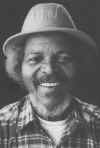
In 1962, tenor sax player Tommy McCook was asked to join the Studio One band,
but "back then I was a John Coltrane disciple, I was into the jazz scene.
I wasn't familiar with ska. I didn't start recording it until a year later,
after listening to the music with Don Drummond. Then I thought I had the feel of
it, so I decided to start recording. My jazz group had broken up and I'd joined
Aubrey Adams's band, playing at the Courtleigh Manor hotel. We all played
in big bands, we all came from a jazz influence. The ska that was being played
changed when I joined the Studio One group. Before that it was a boogie kind of
ska. After I joined it was a jazz-ska thing. I think "Exodus" was my first
instrumental there, and then I started writing for Coxsone. People kept asking
me who were the people on the records - they recognized my sound from the discs.
So I'd tell them who was in the Studio One group, and when I went to the next
session I told [the musicians] to form a group, because people were asking about
them, and people would pay to say them. Jah Jerry said they'd form a group if
I'd lead it. I said I couldn't, because I was still under contract to Adams. And
they still said they'd only form it if I'd lead it. Eventually my contract with
Aubrey was up, and I didn't sign back with him."
And so the most influential instrumental ska band, and certainly the most
famous, began - the Skatalites.
"I formed the group in June of ‘64, and we did pretty good," McCook
continued. "We were going all over Jamaica. We did 14 months on the road before
we disband in ‘65."
Apart from live shows, they recorded a number of hits, like "Guns of
Navarone." With reputations as skilled soloists, the Skatalites were the main
‘band' in a young industry. Most were graduates of the famous Alpha Boys'
School, a Catholic institution which seemed to churn out musical talent -
Roland Alphonso, Jackie Mittoo, and Lester Sterling, any
number of instrumentalists who'd become famous in Jamaican music. And there was
also Don Drummond, perhaps the most gifted of them all, who'd meet a tragic end
in an insane asylum after murdering his common-law wife.
By 1964, ska had become the pre-eminent music in Jamaica, its identity
closely entwined with the country. So closely tied, in fact, that for the
World's Fair that year in New York, the Jamaican government sent over Jimmy
Cliff (as well as bandleader Byron Lee, Prince buster, and Carole
Crawford, the reigning Miss World) in an attempt to export ska to the U.S..
There were performances, and classes were offered in dancing ‘the ska' and ‘the
shuffle.' As history shows, it didn't work.
Ska might not have caught on in America, but in England it was a different
story. But Britain, particularly England, had a growing Jamaican population.
World War II had left the country decimated, both physically and
psychologically. The servicemen who returned came back to a place that needed
rebuilding, both in physical plant and infrastructure, to really make it a land
fit for heroes. The only way was to import labor, so in 1948 the doors were
opened to citizens of the Empire. The money promised was far more than they
could have earned in the colonies (although no mention was made of the higher
cost of living, or the lack of availability of so many things in a country still
living in austerity), that people arrived from all over.
Unsurprisingly, each nationality gravitated to its own, both socially and in
living areas. They needed each other in this foreign place, especially when the
immigrants discovered the promise of riches was no more than words and they
found themselves doing jobs the natives didn't want.
Around people from home, though, things were easier. For the Jamaicans, that
meant importing ideas from the island, one of which was the sound system. By
1956, the first one was operating in England, and soon ‘blues dances,' as they
were known, were a weekend feature of Jamaican communities through out the
country. Once ska hit at home, it made its way across the Atlantic, where it
proved popular with the expatriates. In 1962, three labels were releasing
Jamaican music in the U.K. - Melodisc, which created the Blue Beat label for
ska, with Prince Buster and Laurel Aitken as their main artists; Island, Chris
Blackwell's creation; and R&B. As more and more Jamaicans moved to Britain,
it became a more lucrative market for artists than Jamaica itself.
"You might sell five thousand records in Jamaica, but you'd sell a lot more
over there," Morgan observed.
Aitken, a Panamanian, was one of the first ska musicians to make his home in
England, where his records always sold well, sometimes staggeringly so - "Mary
Lee," an early single, shipped 80,000 copies in England alone. He also made
frequent live appearances in the country.
It took a couple of years, but ska, or blue beat as it was also known, did
manage to break though briefly into the British pop mainstream.
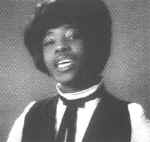
"My Boy Lollipop," by Millie Small was a cover of an old Barbie Gaye
R&B tune. The record became a true international sensation, climbing to #2
in both the U.K. and U.S., which was enough to make part of a generation of
Britons aware of the underground movement happening around them. The Mods
listened hard. For them the music of choice was soul, but there was also a
definite attraction to ska, with its irresistible beat, and also to the sharp
looks of the rude boys, the most fashionable Jamaican youth. Shaved heads, good
clothes, pork pie hats - the rude boys had style, and the mods - some of whom
became skinheads a few years later - copied much of it. There was an affinity of
sorts between the two groups that transcended race. Both were working class, and
had a taste for the good life and strong dancing music. The rude boy phenomenon
had begun in Jamaica and was soon exported to Jamaicans overseas. At home they
were youth who'd flocked to Kingston after independence, only to find no
opportunity in the city. With no work, and no money, they found themselves
existing in the ghettoes of Trenchtown and riverton City, making money any way
they could, often turning to crime (as in the film The Harder They Come),
forming gangs, making their way in the underworld and even into some of the
armed political groups which were gaining in influence. They were cool, and
‘bad,' as they said. Rude boys lived on society's fringes, outsiders, and
expressed themselves through their dress and their dance. Ska, with its quick
beat, demanded a lot of energy from its dancers. But rude boys didn't like to
move that fast. "They used to dance half-speed to certain ska records,"
explained Barrow, "and the music changed to accommodate that."
Which was the birth of rocksteady.
Ska desperately needed to move on. By the summer of 1966 it had been
around for more than half a decade, and while the songs had grown in
sophistication, the basic rhythm and arrangements hadn't. There was still
the defining off-beat emphasis over a walking bass pattern. The rock
steady concept brought the new idea ska sought.
"The rhythm was experimented with," noted Barrow, "and it was slowed
down because of what was happening with the rude boys in the dancehalls.
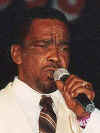 Roy Shirley says he made "Hold Them" in 1965. He could have done it
as a slow rhythm, but I don't think it was rock steady. Hopeton
Lewis went in to do a ska tune, "Take It Easy," and he couldn't manage
it on the rhythm, so he said to play it slow. They played it half-speed,
and when it was done, someone said to him, ‘That rock steady, man, that's
rockin' steady.' And that's how the name came about. He claims he was
before Studio One, Beverley's, everyone with rock steady (the record was
released on Federal)."
Roy Shirley says he made "Hold Them" in 1965. He could have done it
as a slow rhythm, but I don't think it was rock steady. Hopeton
Lewis went in to do a ska tune, "Take It Easy," and he couldn't manage
it on the rhythm, so he said to play it slow. They played it half-speed,
and when it was done, someone said to him, ‘That rock steady, man, that's
rockin' steady.' And that's how the name came about. He claims he was
before Studio One, Beverley's, everyone with rock steady (the record was
released on Federal)."
That's one version of the history, and perhaps more likely than some
others. The advent of rock steady has also been attributed to an extremely
hot summer, which forced all the dancers to move more slowly - to rock,
instead of move wildly - and that was reflected in the new sides
appearing. It's also been said the sound came from musicians'
dissatisfaction with the ska beat, and the search for something new.
Whatever the true reason, it was decidedly different from ska.
"It broke up the rhythm," explained Barrow. "It had the effect of
making the bass play in clusters, a pattern, rather than a continuous
line. The drums and everything fell in with that. [Guitarist] Lynn
Taitt was the guy who orchestrated that. Not enough people mention
him. He was one of the great unsung heroes of Jamaican music, and he was a
Trinidadian."
Inevitably, the new rhythm proved very popular ("Take It Easy" sold
10,000 copies in a single weekend) party because it was new, and also
because dancers didn't have to expend so much energy and could stay on the
floor longer.
Whereas Coxsone Dodd and his Studio One label had dominated ska, it now
became Duke Reid's turn in the pole position, as Treasure Isle quickly
established itself as the home of the new sound. He took Alton Ellis from
Dodd, to add to his stable, which included the Paragons and
Dobby Dobson, all backed by a new studio band, the
Supersonics, led by Tommy McCook. After the 1964 breakup of the
Skatalites, McCook recalled, "Coxsone formed the Soul Vendors, and
I was asked to lead it. I said I didn't want to right then, I needed some
rest after being under pressure. About a couple of weeks later I did say
okay, and renamed the band the supersonics. All I had to do was play music
and rehearse the band, unlike the Skatalites, where I'd had to do
everything. We had a steady weekly gig, they were playing salaries, and
that made it easier. Then we became a Treasure Isle recording group. A lot
of the pressure was off me, and we were doing pretty good."
Among the vocal groups they backed for Reid were the Techniques,
one of the best of the era. With hits like "Queen Majesty" and "Love Is
Not A Gamble" they were a major force, and a training ground for a number
of singers who'd progress to solo careers, like Slim Smith and
Lloyd Parks, who worked with the core of Winston Riley and
Frederick Waite.
But the change hadn't edged Prince Buster out of the picture. Having
scored hits himselfduring the time of ska, as well as being one of its
leading producers, he continued to release material, with "Judge Dread" in
particular becoming huge, its castigation of the Rude boy style triggering
a number of like-minded songs from other artists.

Although ska had flared briefly in England, the flame didn't take full
hold until rock steady hit. After that the music's profile rose sharply,
thanks to two factors - the Trojan record label, which licensed a great
deal of Jamaican product, and an artist who enjoyed a string of hits. The
budget-priced Trojan Tighten Up compilations gave listeners volumes
of Jamaican music, and were vital listening to anyone with any degree of
interest. Their sheer cheapness brought a lot of the curious on board,
many of whom proceeded to catch the bug, and explore the music more
deeply. But the person who became the face of rock steady in the U.K. was
Desmond Dekker (born Desmond Dacres).
He'd been a part of Leslie Kong's Beverley stable since 1962, but it
wasn't until 1967 that he scored his first real hit with "007 (Shanty
Town)," one of the many responses to "Judge Dread." In the U.K. the single
(issued by Trojan) went to #12, and began a string of hits for Dekker
which would extend into 1969, by which time Jamaica was already in thrall
to reggae. His biggest song, "Israelites," reached #1 in Britain, Canada,
Sweden, West Germany, Holland, and South Africa, and gave Dekker his only
U.S. chart exposure, climbing to #9.
The nascent skinhead movement, an outgrowth of the Mods, lapped up rock
steady, as well as a singles from the cusp as the genre grew into reggae,
like The Pioneers' "Long Shot Kick The Bucket" and the
Upsetter' "Return of Django," to the extent that in England the
music became known as skinhead reggae.
The prime time of the style was brief, at least in Jamaica, however. It
ran from mid-1966 to the close of 1967 when, according to singer Morgan,
"we didn't like the name rock steady, so I tried a different version of
"Fat Man" (one of his early hits). It changed the beat again, it used the
organ to creep. Bunny Lee, the producer, liked that. He created the
sound with the organ and the rhythm guitar. It sounded like ‘reggae,
reggae' and that name just took off. Bunny Lee started using the world and
soon all the musicians were saying ‘reggae, reggae, reggae.'"
Again, it's up in the air as to who really invented reggae, although
the first record to bear the name was "Do The Reggae" (or "Reggay") by the
Maytals in 1968. According to historian Barrow, it was producer Clancy
Eccles who coined the term, taking street slang for a loose woman -
streggae - and changing it slightly. The music itself was faster than rock
steady, but tighter and more complex than ska, with obvious debts to both
styles, while going beyond them both.
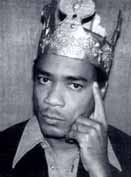
And like any new music, it had its young guns, in this case producers
Lee ‘Scratch' Perry, and Bunny Lee, and engineer Osborne ‘King
Tubby' Ruddock. Perry had worked for Coxsone Dodd, often surpervising
the production work, without receiving the glory and money which went
along with that. Ruddock had worked for Duke Reid, and also ran his own
sound system, Home Town Hi-Fi. His background as an electrical engineer
meant that his system sported some unique, home made gadgets, echo in
particular, that helped set it apart from others.
As well as the upcoming talent behind the board, plenty of new artists
were eager to shine in the studio. Since the established labels already
had their house bands, the new boys had to find their own talent,
musicians with something to prove - and they proved it playing reggae.
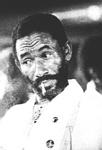
Perry was the first of the new crop to hit big, in his case as a
recording artist. "People Funny Boy," an obvious dig at Dodd, sold well,
and gave Perry the impetus to start his own label, Upsetter Records, in
1969. In short order he made it a viable entity with two more hits -
"Tighten Up," by the Untouchables and "Return of Django" from the
upsetters, his house band, which included two brothers Carlton and
Aston Barrett as the rhythm section.
The success helped Perry woo a group he'd worked with at Studio One -
the Wailers. After some initial success, the Wailers had found life under
Dodd difficult. Dodd had befirend Bob Marley, even putting him in charge
of pairing singers and songs for the label, but he'd kept his distance
from the more volatile Peter Tosh and the Rastaman Bunny Wailer. In 1966,
Marley moved to America, where he worked at the line in a Chrysler plant
in Wilmington, Delaware. It was his chance to earn good, steady money,
which he did until he lost his job. After discovering he wasn't eligibile
for welfare, then receiving a draft notice, he returned to Jamaica and
music, writing new material, some of which would appear on Wailers' albums
in the ‘70s.
By late 1967 the Wailers had left Dodd, and the following year formed
their own label, Wailin' Soul, which proved a failure, in part because all
three members spent time in jail - Tosh for obstruction during a
demonstration against the regime in Rhodesia (now Zimbabwe), and Wailer
and Marley for possession of marijuana. Even though the label collapsed,
the Wailers weren't discouraged.

They began again with the Tuff Gong label. While it didn't make them
rich, they made enbough to survive, and they also signed with Jad, the
company run by singer Johnny Nash as songwriters, earning $50 JA
each per week. That the band had ability was beyond doubt; the problem was
that they were unable to put together the lucrative overseas deals which
would catapult them to the next level. Their rebellious attitude scared
off potential partners. So when Perry came along, they leaped at his
chance. The Wailers and the Barrett brothers became friendly, and Aston
Barrett became the Wailers' arranger.
The collaboration with Perry never brough chart success. However, in
artistic terms, Perry helped them reach a place no reggae band had reached
before, and very quickly. The bud was there - it would just take a little
longer before it flowered.
While Perry was working his distinctive brand of magic, King Tubby was
taking the young reggae in another direction. The DJ (a man who ‘toasted'
or rapped over instrumental tracks) had long been a staple of the sound
systems, and Tubby had one of the best in Ewart Beckford, known as
U-Roy.
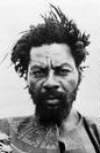
Tubby had discovered that acetates, known as dub plates, could be
manipulated. The vocal track could be left off, creating a new ‘version'
of the song, something for U-Roy to toast over. When he put the two
elements together in a studio, he came up with something new. "Wake The
Town," record at Duke Reid's, was the first toasting record (although
producer Keith hudson claimed to have recorded U-Roy a year
earlier, on a version of Ken Boothe's hit "Old Fashion Way," retitled
"Dynamic Fashion Way"). It went directly to the top of the charts,
ushering in a new style that would be one of the parents of hip-hop.
Others followed the path. Big Youth, who began as a U-Roy
imitator before finding his own style, broke through with "S.90 Skank"
(named for a moped), and I-Roy (Roy Reid) followed with "Musical
Pleasure." But it was U-Roy who led the pack for the first half of the
1970s. He was one of the most political toasters of the time, putting out
records like "Sufferer's Psalm" (1974), which used the 23rd Psalm as a
springboard to condemn capitalism. It sold 27,000 in the Caribbean; not
earth-shattering but respectable for such an overtly political disc.
In the U.K. Trojan focused on the very commercial end of reggae,
"music," noted writer Sebastian Clarke, "with a beat, a soft melody and
strings behind it." It proved to be a potent combination. From 1970-75,
Trojan registered 23 top 30 hits from the likes of John Holt,
Bob and Marcia, Ken Boothe, Desmond Dekker, and Dave and Ansell
Collins. There were also two subsidiary labels, Attack and Upsetter,
for the work of producers Bunny Lee and Lee Perry. It was an affirmation
that the music could reach out beyond the Afro-Caribbean community, and
the success helped lay the groundwork for a revitalized. Bob Marley and
the Wailers, whose records would appear on Chris Blackwell's label,
Island.
From concentrating on Jamaican music, Blackwell had ventured into white
progressive rock in 1967, and quickly become one of the U.K.'s premier
labels in the field. But he'd retained his love of Jamaican music, and
held on to one artist he'd singed in 1965 - Jimmy Cliff.
He'd moved Cliff to England and carefully groomed him to become an
international artist, getting rid of the patois speech. And Cliff did
establish a strong following in France and Scandinavia. By 1967 he'd had a
British hit, "Give And Take," and released Hard Road to Travel,
which showed him as a soul balladeer. With the end of the decade he was
established as a hitmaker ("Wonderful World, Beautiful People," "Many
Rivers To Cross," and his cover of Cat Stevens's "Wild World" all
charted) and a songwriter, penning for Desmond Dekker ("You Can Get It If
you Really Want"), the Pioneers ("Let You Yeah Be Yeah"), and even
venturing into the political arena with "Vietnam," which Bob Dylan
described as "the best protest song ever written."
Cliff decided to return to Jamaica, and change his image by making
Another Cycle in Muscle Shoals, one of the homes of soul music, in
1971. However, the world wasn't ready for a reggae star going soul (that
would have to wait for Toots in Memphis a few years later), and the
record stiffed. Instead he turned to acting, starring in writer/director
Perry Henzell's film The Harder They Come.
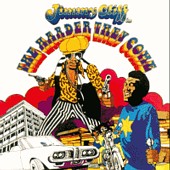
The movie arrived in theaters in 1972, and Island released the
soundtrack album, which featured Cliff singing the title song, which was
also the lead single. Rumors circulated that the 45 never became a hit
because Island ignored store requests for more stock to prevent its
success, in an attempt to make the reluctant Cliff sign a further one-year
option with the label; they were offering 14,000GBP, and he was asking
20,000 (in 1973 Cliff wouls sign with EMI in the U.K., and Warner Bros. In
the U.S.).
More than anything before it, The Harder They Came brought
reggae and Jamaica to global attention, without any concessions to the
mass market. The characters all spoke in patois, virtually
incomprehensible to non-native ears, telling the story of a rude boy's
rise and fall in Kingston. The ghettoes were truthfully portrayed. The
soundtrack steered clear of the pop-reggae sound. While half of the
album's twelve tracks were from Cliff, the others were a selection of
reggae classics - "Rivers Of Babylon" (Melodians), "007 (Shanty
Town)" (Desmond Dekker), "Pressure Drop" (Toots and the Maytals), and of
the greatest rude boy anthems, the Slickers' "Johnny Too Bad." It
was reggae at its unvarnished best, not sweetened in any attempt to win
over new fans.
Between chart success and the film, reggae how had recognition. What it
needed was one person to bring together the disparate elements -
songwriting, musicianship, and image - that could fully establish reggae
both commercially and critically. It seemed like a tall order, but the
person was already there.

In 1972 the Wailers, with the Barrett brothers now part of the band,
moved to England to work for johnny Nash. Marley had preceded the others,
to work with Nash on the score of a Swedish film starring Nash (it was
never released). Once ensconced in a cheap London hotel, the Wailers
became the backup band for Nash's I Can See Clearly Now album, and
Marley signed a contract with CBS, who issued his "Reggae On Broadway."
Nash's promotion man, Brent Clarke, worked the single hard, but with no
record company support, it only sold 3000 copies. Soon Clarke was
expending all his energies on the Wailers, moving them into a house which
became a focal point for young black musicians.
When Nash left England for America, Clarke began work at Island, and
gave Blackwell a demo tape of songs Marley had written for Nash. Blackwell
was familiar with them, and had once considered signing them to Island,
before being dissuaded by their difficult reputation. Now Island were
looking for a reggae artist to replace Cliff, and the Wailers were in
danger of being deported. The timing was perfect for a deal.
For the meager sum of 8000GBP, and the right to release their own
records in the Caribbean, the Wailers became Island recording artists
(actually for the second time - Island had issued "Put It On" in 1965).
Borrowing money from Clarke, who'd brokered the deal, they returned to
Jamaica to record. At Dynamic Studios in Kingston, the tracks that made up
Catch A Fire were laid down, using not only the band, but also some
session men, including Robbie Shakespeare and Tyrone Downey.
When Marley (who at this stage did not have dreadlocks) delivered the
tapes to Blackwell in the winter of 1972, Blackwell could sense the
potential. With the right push, it could break reggae into the mainstream.
However, the sound was still too Jamaican, and so guitarist Wayne
Perkins and keyboard player Rabbit Bundrick were drafted in.
The finished album had both a rootsy feel and a fine rock sheen.
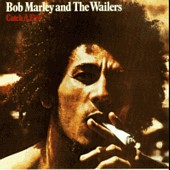
Island put a lot of marketing muscle behind Catch A Fire. It
came in a die-cut cover with guaranteed eye appeal. The disc, and the
band, received a great deal of press, and toured Europe and America; in
New York, they played a week at Max's Kanasa City, doing three 30-minute
sets a night. But a winter tour of the U.K. was abandoned, ostensibly
because of the cold.
The three core members of the Wailers had been together for a decade,
but with the flowering of real success, cracks in the unity began
appearing. Blackwell had formed a strong working relationship with Marley,
and was pushing him as the leader of the group, something neither Tosh nor
Wailer fully understood. But Tosh, who once pulled a machete on Blackwell,
was notoriously volatile and Wailer, still the only Rasta in the band,
refused to sign agreements and contracts, a nightmare for both label and
management.
Even with Island's might and money, Catch A Fire didn't make
international stars of the Wailers. The white rock world need more time to
absorb the new phenomenon (acceptance really came with Eric
Clapton's cover of Marley's "I Shot The Sheriff"). But it was the
record that became the foundation for reggae to become a global
phenomenon.
 Roy Shirley says he made "Hold Them" in 1965. He could have done it
as a slow rhythm, but I don't think it was rock steady. Hopeton
Lewis went in to do a ska tune, "Take It Easy," and he couldn't manage
it on the rhythm, so he said to play it slow. They played it half-speed,
and when it was done, someone said to him, ‘That rock steady, man, that's
rockin' steady.' And that's how the name came about. He claims he was
before Studio One, Beverley's, everyone with rock steady (the record was
released on Federal)."
Roy Shirley says he made "Hold Them" in 1965. He could have done it
as a slow rhythm, but I don't think it was rock steady. Hopeton
Lewis went in to do a ska tune, "Take It Easy," and he couldn't manage
it on the rhythm, so he said to play it slow. They played it half-speed,
and when it was done, someone said to him, ‘That rock steady, man, that's
rockin' steady.' And that's how the name came about. He claims he was
before Studio One, Beverley's, everyone with rock steady (the record was
released on Federal)." 













